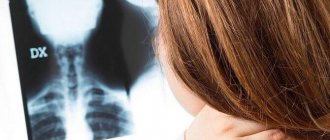Description of the disease
Migraine is a type of neurological disease.
It occurs quite quickly and is characterized by throbbing pain in one or two hemispheres at once.
The following factors influence the occurrence of the disease:
- non-compliance with the work and rest schedule;
- taking hormonal medications;
- stress;
- excess sleep or lack of sleep;
- climate change;
- daily diet.
If we talk about migraine of gastronomic origin, then it also has its own characteristics. Often it is food that causes discomfort, and it, in turn, occurs after consuming a particular product. The range of products that cause headaches in adults is constantly growing.
Reference! Usually the pain is lateral or frontal. Sometimes a strong compression or squeezing is felt in the affected areas. Often a person feels heat in the chest, shoulders and neck, and immediately turns red.
Folk remedies
It has been noted that natural pain relievers include the following:
- Ginger. For migraines, it can become a real analgesic. It is enough to brew ginger tea and drink it a couple of times a day. Ginger is cut into thin rings, poured with boiling water and left to infuse a little. Tea is ready.
- Mint. It is added to tea. Massaging the neck area with peppermint oil (essential) will help you relax. Mint is also used for inhalation.
- Linden, lemon balm, lavender. These herbs are recommended to be brewed and drunk instead of tea. During an attack, drink this tea every 2-3 hours.
- Calendula. It is recommended to drink a couple of cups of calendula infusion a day. Add a handful of leaves to a glass of boiling water. The infusion is drunk in small portions.
- Lavender oil. Used in compresses. They are applied to the forehead.
Food additives that cause attacks
Sometimes pain makes itself felt due to a number of specialized substances that are included in the products consumed. But what exactly provokes another attack? Food additives and dyes can be irritants:
- tyramine It is characterized by toxicity and promotes vasoconstriction, as well as an increase in blood pressure. In addition, there is an excessive effect on the central nervous system. A huge amount of the substance is present in everyone’s favorite soy sauce, processed and hard cheese, meat products, yoghurts, all types of chocolate, garlic, nuts and legumes.
- sodium nitrate. This salt dilates blood vessels, impairing the movement of CO2. As a result, brain hypoxia may occur. This only intensifies the symptoms of the disease. The substance has a negative effect on the human body, and if consumed in large quantities, it can even lead to death.
- aspartame. The corresponding sweetener is present in a huge number of products. It contributes to the development of the most severe attacks. It can be found in regular ketchup, cookies, sweets, yogurts and various carbonated drinks.
- monosodium glutamate. The substance is designed to enhance the taste parameters of the product. It is often used in the production of canned food, crackers, chips, instant purees, noodles and sauces, ice cream, and sausages.
- histamine. This substance affects the normal course of all internal processes. The result may be hypotension, increased blood frequency, and tissue swelling. The substance is found in seafood, spinach, chocolate, sweet fruits, and products containing yeast.
- phenylethylamine. This is a so-called chemical stimulant. The substance affects the way a person tends to perceive the world around him. It is found in all types of wine, citrus fruits, chocolate, and yellow cheese.
Important! To avoid negative consequences, it is necessary to more carefully study the packaging of purchased products.
Healthy foods
For supporters of a healthy lifestyle, following the rules of a therapeutic diet will not be difficult. Many of the components listed above are not very rich in nutrients. Their absence in the diet will affect the general condition of a person in the most favorable way. If the basis of your diet consists of foods that promote the production of serotonin, this will be an additional advantage.
The diet for migraines in children and adults is based on the following products:
- low-fat chilled sea fish;
- vegetable oils – flaxseed, corn, olive, sunflower;
- foods rich in magnesium - dried fruits, bran, seaweed;
- brown rice;
- buckwheat and oatmeal;
- vegetable broths;
- foods rich in B vitamins - baked potatoes, fresh green vegetables, sunflower seeds, melons, dates, cereals (except semolina);
- lean poultry and rabbit meat – freezing of components is undesirable, preference is given to chilled products;
- stewed or steamed bright vegetables, provided they are well tolerated;
- low-fat fermented milk products without additives, dyes, or flavor enhancers;
- ginger - daily consumption of 1 g of fresh or dry root in pure form or as part of tea significantly reduces the frequency of attacks;
- fresh or baked apples, pears, peaches, figs.
In addition to the listed migraine products, the daily menu should include a sufficient amount of liquid. These can be herbal teas, still water, fruit drinks or compotes. If tolerated well, it is recommended to drink freshly squeezed juices from grapes, cucumbers, celery, beets, and carrots daily.
List of permitted products
| Vegetables and greens (eggplant, zucchini, cabbage, broccoli, Brussels sprouts, cauliflower, green onions, cucumbers, squash, parsley, lettuce, celery, asparagus, Jerusalem artichoke, dill) |
| Fruits (pears, nectarines, peaches, apples) |
| Berries (gooseberries, black currants) |
| Nuts and dried fruits (raisins, flax seeds, sunflower seeds) |
| Cereals and porridges (buckwheat (kernels), oatmeal, oat flakes, wheat bran) |
| Flour and pasta (Pasta) |
| Raw materials and seasonings (Basil) |
| Dairy products (fermented milk products, kefir 0%, kefir 1%) |
| Cheeses and cottage cheese (brynza cheese (from cow's milk), amber processed cheese, cottage cheese 0.6% (low-fat)) |
| Poultry (boiled chicken, steamed chicken breast) |
| Fish and seafood (seaweed) |
| Oils and fats (butter, linseed oil, olive oil, sunflower oil) |
| Non-alcoholic drinks (mineral water, instant chicory) |
| Juices and compotes (rosehip juice) |
What food should you not eat?
Doctors came to the conclusion that the attack is provoked by the following products:
- peanut;
- cheese;
- figs;
- alcohol;
- grape;
- citrus;
- flour;
- avocado;
- ice cream;
- alcohol;
- fruit juices;
- sweet soda.
Important! Migraines are triggered by cold foods. This fact was noticed by 90% of patients. For example, many people are sensitive to ice cream. It is not necessary to completely exclude these foods, just limit their consumption.
If we talk about drinks, then it is necessary to remove from the diet:
- wine and liqueur;
- liquor;
- beer;
- champagne;
- cognac;
- rum
You need to be careful when handling coffee. Sometimes it leads mainly to a narrowing of blood vessels, and sometimes it provokes an increase in unpleasant sensations.
Elements contained in low-alcohol drinks can also contribute to the development of migraines, so they are also prohibited.
Differences from allergies
Some people confuse migraines and food allergies. Unlike migraines, allergens act differently. They cause a reaction of the immune system, expressed in swelling, runny nose, redness of the skin, sneezing, coughing, and sore eyes.
This individual characteristic is genetically determined and can arise from harmless foods or substances, in most cases it is:
- dust;
- pollen;
- nuts;
- citrus;
- milk;
- some medications;
- insect bites;
- chemical substances.
Basics of proper nutrition
Long periods between meals or unsystematic intake of food may be one of the causes of the disease . In particular, the functioning of the nervous system deteriorates due to a drop in sugar levels. For frequent attacks, doctors advise using:
- small portions of food over a short period of time;
- drink more still water;
- Enrich your diet with whole grains containing fiber and lean protein foods.
Important! To prevent migraines you need to avoid stress, sleep well and exercise.
For frequent migraine attacks, you must adhere to a specialized diet. It is necessary to limit the consumption of alcohol, fatty and high-carbohydrate foods. If a person has difficulty creating a menu, it is better for him to consult a nutritionist.
Food composition and migraine
The neurological disease is not yet fully understood. Scientists associate the headache attacks that occur with it with changes in the condition of the blood vessels in the brain. Studies have shown that pathological expansion and contraction of blood channels can occur under the influence of substances contained in food products. Direct and cross allergens can also cause cephalalgia. The former themselves affect the body, the latter arise as a result of an incorrect combination of products. For example, kefir should not be combined with kvass or yeast dough, bananas with avocado or melon, potatoes with tomatoes or eggplants.
Proper nutrition for migraines is based on the following recommendations:
- avoiding or limiting simple carbohydrates;
- it is necessary to follow a food intake schedule - fasting or disruption of the schedule is no less dangerous than consuming inappropriate ingredients;
- introduction of probiotics into the diet in natural or pharmaceutical form;
- fatty, salty, sweet foods are minimized or gradually replaced with healthier analogues;
- maintaining water balance - an adult should drink at least 2 liters of water per day, if he does not have a tendency to edema or other contraindications;
- enriching the diet with vitamins and minerals – micronutrient deficiency provokes headaches and increases the duration of attacks. For migraines, most patients are advised to take complexes based on B vitamins, magnesium, calcium, manganese, copper, zinc;
- avoidance of foods that excite the nervous system.
If you are diagnosed with migraine, you should visit an allergist. The health care provider will conduct the necessary tests and identify seizure triggers. Based on the research results, an individual, most effective diet will be created.
Paying for pleasure
Remember Tsvetaeva’s famous phrase “to treat sadness with chocolate”? But this delicacy really improves your mood, since cocoa produces in the brain a substance related to opium - phenylethylamine. And everything would be fine if sharp fluctuations in the joy hormone did not lead to the same sharp decrease in serotonin and, as a consequence, to a severe migraine attack. Alas, delicious and healthy dark chocolate, which contains a large percentage of cocoa, is one of the most common provocateurs of gourmet migraines. So it’s better to be careful with this delicacy too. But white and milk chocolate usually do not cause headaches. But, however, it threatens with caries and obesity.
Coffee lovers often suffer from throbbing headaches. After all, caffeine is highly addictive, and when its effect on the body weakens, the blood vessels in the brain dilate greatly, which causes pain. So it is better not to drink more than one cup of coffee per day. By the way, caffeine is also found in tea, cocoa and cola. Be careful with them too.
Article on the topic
Migraine is a chronic disease. How to get rid of attacks of pain?
And about alcohol. When we drink too much alcohol, we naturally understand that a hangover the next morning cannot be avoided. Well, it makes sense - you have to pay for pleasure. But what a shame it is to pay with a severe headache for just one glass of fine, expensive wine or for half a mug of properly brewed beer! But, alas, it is dry, aged red wine, champagne and expensive beer (especially dark beer) that most often cause migraines. Pay attention to this!
Symptoms
Let's list the main ones:
- During the prodrome, when a migraine attack just begins, a person may experience general weakness, as well as the inability to concentrate on one thing.
- It is important to understand the nature of such headaches. The attack occurs in one part of the head, the pain is pressing, throbbing and severe.
- Initially, the pain affects only the temples and gradually moves to the forehead and eyes.
In this case, a severe headache can begin from the back of the head and from there spread to the other side. Pain may worsen when turning your head and even while walking.
Migraines can affect any area and periodically move from one part to another. A person may experience nausea, vomiting, and irritation to bright lights and loud noises.











